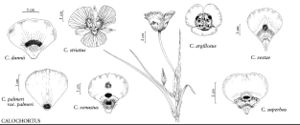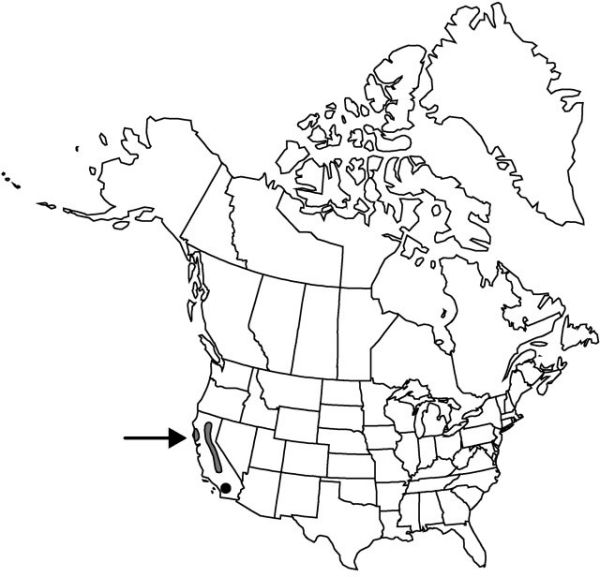Calochortus superbus
Leafl. W. Bot. 1: 11. 1932.
Plants bulbose; bulb coat membranous. Stems 4–6 dm. Leaves: basal withering, 2–3 dm; blade linear. Inflorescences subumbellate, 1–3-flowered; bracts 2–8 cm. Flowers erect; perianth open, campanulate, each member with median brown or purple blotch surrounded by bright yellow zone; sepals lanceolate, attenuate, 2–4 cm; petals white to yellowish or lavender, usually streaked with purple toward base, obovate to cuneate, rounded, 2–4 cm, with a few short hairs near gland, apex retuse to obtuse; glands linear, strongly chevron-shaped to weakly lunate, not depressed, densely covered with short hairs; filaments 7–9 mm; anthers lanceolate-linear to oblong, 8–10 mm, apex acute to obtuse. Capsules erect, linear, angled, 5–6 cm, apex acute. 2n = 12, 14, 20, 26.
Phenology: Flowering late spring–mid summer.
Habitat: Open slopes, dry meadows or wooded places in valley grassland, foothill woodland, pine forest
Elevation: 0–1700 m
Discussion
Selected References
None.

